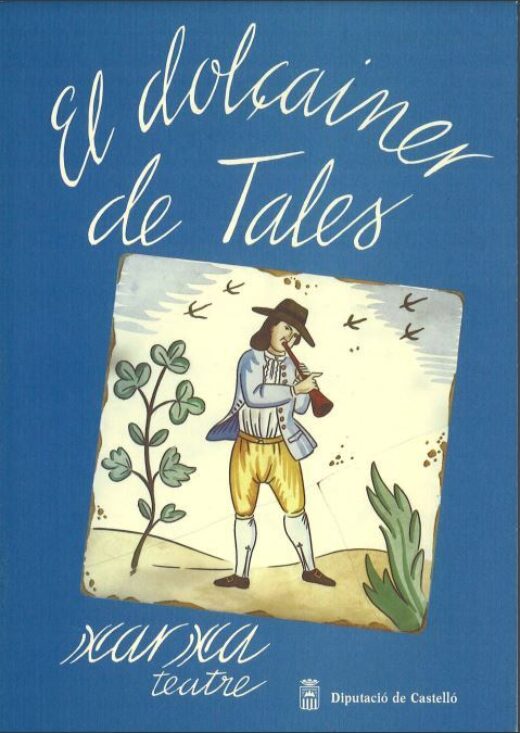
Printed
119 pages
El dolçainer de Tales
El dolçainer de Tales (the dulcian player from Tales) is a collective work produced by the Valencian theatrical troupe Xarxa Teatre under the direction of Manuel V. Vilanova. The play was adapted from a text by Vicent P. Serra; the musical arrangements were composed by Diego Ramia. This street performance tries to revive the music of the “dolçainer” (dulcian players) of the village of Tales (Castellón province, Spain) and is presented as a tribute to traditional Valencian music. It is a collection of festive toccatas, oral texts, performances with a carnivalesque tone and other spectacular elements usually presented during large celebrations in many Valencian towns. They were in part “updated” and reworked depending on the rhythm, the space and the duration of the stage directions, that were organised around the theatricality of the festival and of Dulcian music.
When considered in relation to the evolution of the theatrical troupe Xarxa, El dolçainer de Tales creates a closer connection between the oral text, the creation of the characters and the attention given to the performances. All of that is done without losing one of the characteristic elements of the theatrical troupe’s aesthetics: the use of the street as a scenic space.
A religious procession is disrupted several times
The play starts with the initial call of the town crier announcing the arrival, early in the morning, of the dulcian player. The bell is rung three times to catch people’s attention and the dulcian player plays his first notes: the first parade of the festival begins. Then the mayor makes a speech inviting everyone to come to the celebration. The town crier then introduces the procession of Sant Antoni (Saint Anthony), with the dance “dels cavallets” (the “little horses”, or skirted hobby horses). The fishmonger then announces the Saint’s celebration, by imitating the sermon of the priest using a hagiographic tone. Then, interrupting the procession, the devil appears and incites everyone to follow him, but the angel appears and fights the Devil: the procession resumes. Then the “Cabut” (a big head) invites people to dance with other big heads and with giants to the sound of the dulcians. Once the march is over and people have returned to the main square, the town crier shouts and the bull is released (the effigy of a bull mounted on wheels), the balls fixated on the bull’s horns are set on fire and all the other rituals surrounding the ancestral rite of the “toro embolat” (the burning bull) begin, as the music of the dulcians still plays. The show and the festive episode itself end with the town crier announcing the final dance, which can be accompanied by songs and a bonfire.
First performance
Main square of the town of Tales (Castelló, Espagne), Xarxa Teatre
Publications and translations
El dolçainer de Tales. Castelló: Diputació de Castelló, 1987.